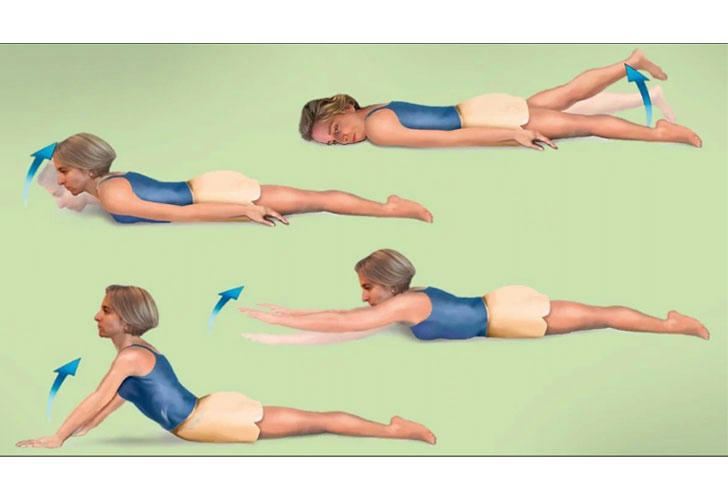How to Perform Rehabilitation Exercises for Ankylosing Spondylitis at Home
Ankylosing spondylitis (AS) is a type of inflammatory arthritis that primarily affects the spine, leading to pain and stiffness. Engaging in regular rehabilitation exercises is crucial for managing symptoms, maintaining flexibility, and enhancing overall quality of life. This article provides a comprehensive guide on how to perform effective rehabilitation exercises for ankylosing spondylitis at home, along with recommended products to support your recovery.

Understanding Ankylosing Spondylitis
Ankylosing spondylitis typically develops in young adults and can lead to the fusion of the vertebrae over time, resulting in reduced mobility. Early intervention through exercise can help alleviate pain, improve posture, and maintain spinal flexibility.
Key Goals of Rehabilitation
1. Pain Management: Reduce discomfort through gentle stretching and strengthening exercises.
2. Improved Mobility: Enhance flexibility and range of motion in the spine and joints.
3. Strengthening Core Muscles: Build strength in the muscles that support the spine to prevent future injuries.
4. Postural Improvement: Encourage good posture to alleviate pressure on the spine.
Recommended Exercises for Ankylosing Spondylitis
1. Back Extensions
How to Do It: Lie on your stomach with your forearms resting on the ground. Gently push your upper body off the ground while keeping your hips down. Hold this position for 10-20 seconds, then relax. Repeat 3-5 times.
Benefits: Helps stretch the spine and improve flexibility.
2. Pelvic Tilts
How to Do It: Lie on your back with your knees bent and feet flat on the floor. Tighten your abdominal muscles and flatten your lower back against the floor by tilting your pelvis upward. Hold for 5 seconds, then relax. Repeat 10-15 times.
Benefits: Strengthens abdominal muscles and stabilizes the lower back.
3. Knee-to-Chest Stretch
How to Do It: Lie on your back with knees bent. Bring one knee toward your chest while keeping the other foot flat on the floor. Hold for 15-30 seconds, then switch legs. Repeat 3-5 times for each leg.
Benefits: Stretches the lower back and relieves tension.
4. Wall Slides
How to Do It: Stand with your back against a wall, feet shoulder-width apart. Slowly slide down the wall as if sitting in a chair, aiming for thighs parallel to the floor if possible. Hold for 5-10 seconds, then slide back up. Repeat 5-10 times.
Benefits: Strengthens leg muscles and improves posture.
5. Bird Dog
How to Do It: Start on all fours with hands under shoulders and knees under hips. Extend one arm forward while extending the opposite leg back, keeping both parallel to the ground. Hold for a few seconds, then switch sides. Repeat 5 times on each side.
Benefits: Improves core stability and balance without straining the back.
6. Seated Trunk Rotation
How to Do It: Sit upright in a chair with feet flat on the floor. Place your hands on your hips or behind your head and gently rotate your torso to one side while keeping your hips forward. Hold for a few seconds, then return to center and repeat on the other side. Perform 5 rotations per side.
Benefits: Enhances spinal mobility and flexibility.
Recommended Products for Home Rehabilitation
1. Foam Roller
Helps relieve muscle tightness and improve flexibility.
2. Resistance Bands
Useful for strengthening exercises; they provide resistance without putting excessive strain on joints.
3. Exercise Mat
Provides cushioning during exercises; essential for comfort while performing stretches and movements.
4. Back Support Cushion
Helps maintain proper posture while sitting; beneficial during recovery periods when sitting is necessary.
5. Heating Pad
Can be used before exercises to relax muscles or after workouts to reduce soreness.
Tips for Successful Rehabilitation at Home
Start Slowly: Begin with gentle exercises that do not exacerbate pain; gradually increase intensity as tolerated.
Stay Consistent: Aim for regular exercise sessions (3-5 times per week) to promote healing and strength building.
Listen to Your Body: Pay attention to pain signals; avoid any movements that cause significant discomfort.
Consult a Professional: Work with a physical therapist or healthcare provider to develop a personalized exercise plan tailored to your specific condition.
Conclusion
Recovering from ankylosing spondylitis requires dedication and a structured approach to rehabilitation exercises at home. By focusing on gentle stretching, strengthening core muscles, and improving mobility, individuals can effectively manage their symptoms and promote healing. Utilizing recommended products can further enhance recovery efforts, making it easier to perform exercises safely and comfortably. Always consult healthcare professionals before starting any new exercise program to ensure it is appropriate for your specific situation.
